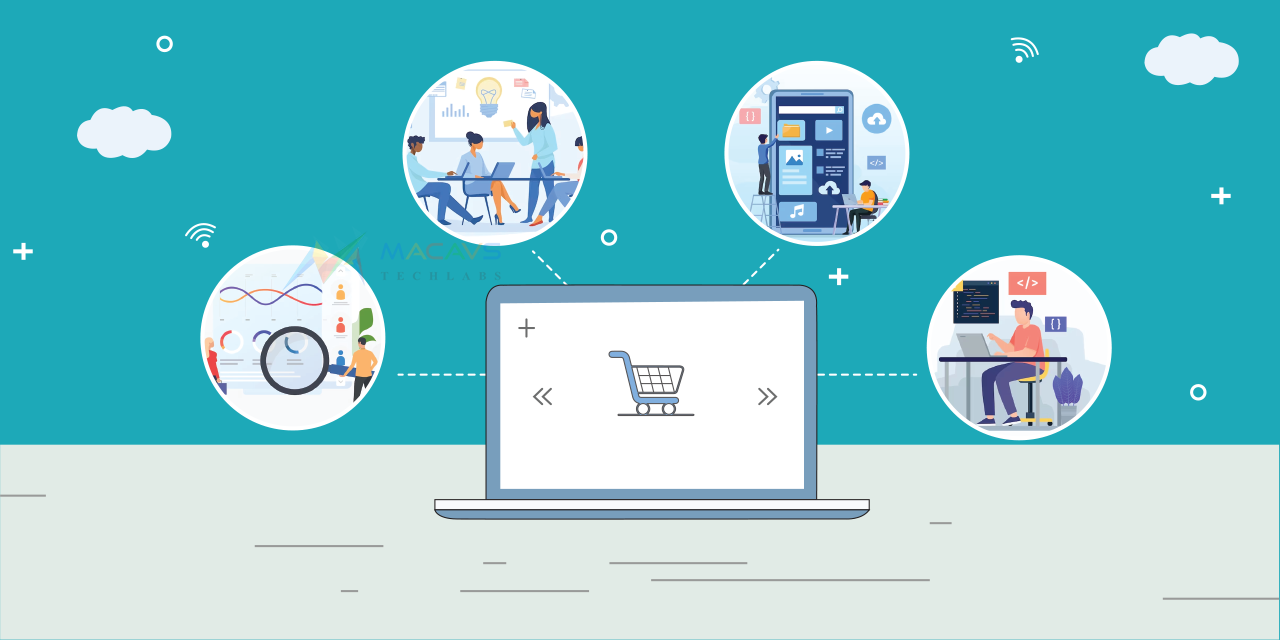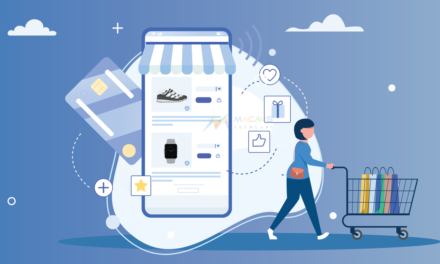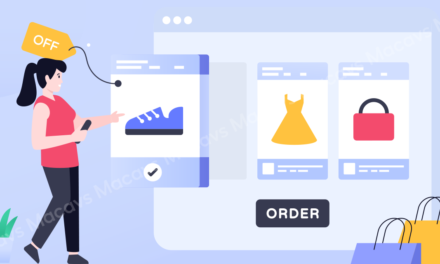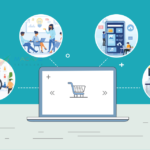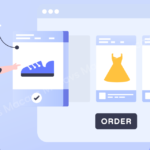Gone are the days without Ecommerce websites, when we used to purchase in the storefronts, We people should spend some special time buying our needs.
Now, the scenario has changed tremendously, everything comes under our smartphones, from buying groceries to sneakers, and Ecommerce applications have introduced numerous conveniences. Allowing us to procure essential items from distant locations with ease and comfort.
Hence, the selling and buying rates of Ecommerce websites are increasing abundantly. Consequently, it increases the Ecommerce website launches too.
This is a blog for individuals who are aiming to start an Ecommerce business. Also, If you are a person who is seeking in-depth knowledge about Ecommerce business, then study this compelling topic of “how to start an Ecommerce business“
Let’s move to catch your Ecommerce website.
Why Businesses Need Ecommerce Websites?
Starting a business in a big range is a dream for many entrepreneurs, but beginning a brick-and-mortar will need heavy investments. Whereas, creating a business with an Ecommerce website is much less.
Not only the investments, There are various benefits to creating an Ecommerce website. Here are the reasons, that why an online presence is important for your business.
Diversifying Market Reach
If you are running a small storefront business, it is hard to attract a large audience to your shop. There is a limit to reaching and servicing the customers. But with an Ecommerce website, you can easily acquire the market reach, with the same products. Instead of selling at one place, you can meet fast selling with multiple customers.
Exceptional Retail Experience
With offline stores, there are not many possibilities for giving a unique shopping experience to the buyers. But with an Ecommerce website, via personalized data, you can get big attraction from the people with an interactive interface, grabbing videos and stories. From searching for a product to completing it with a checkout process, you can give a remarkable experience to the users in many ways. These unique experiences make the users feel an extraordinary experience and use your online shopping consistently.
To Strengthen Brand Recognition
With offline stores creating a brand reputation will take a long time. However, the online presence with a well-designed user-friendly website would assist you in reaching the global audience that establishes your brand recognition beyond your business’s physical location. This digital representation with branding elements like logos, and color appearance, will show your brand’s uniqueness.
Satisfying Users With Evolving Trends
Have you ever thought about how the online shopping industry is rising day by day? It’s only because of the rise of evolving technology trends.
Think if Amazon stops its online shopping with a website alone. Surely, they couldn’t earn the revenue in billions of dollars, compared to what they yield now. Because we people expect convenience and comfort in everything, growing trends are bringing that convenience by doing consistent updates. Trends such as virtual reality and artificial intelligence are making online shopping more interactive than physical activities.
Less Financial Risk
Starting a storefront or traditional store for your business could need heavy investments. If your business doesn’t reach the target revenue, it will turn you down with a bulky financial loss.
But an Ecommerce website doesn’t lead you to that situation, developing and launching an Ecommerce website, is comparatively less than opening your traditional store. If an Ecommerce website doesn’t reach the expected revenue growth, surely it won’t dive you to the big financial flop.
From the above pinpoints, you might understand the necessity of getting your online presence with a defined Ecommerce website.
Here is a step-by-step guide to understanding all about Ecommerce website development.
Steps To Build An Ecommerce Website
Framing a business without pre-planning wouldn’t meet the victory efficiently. Apprehending the steps involved in developing an Ecommerce website would enhance your knowledge of starting an Ecommerce business clearly.
1. Frame Your Ecommerce Business Strategy
From the heading itself, you might understand, what your initial step is. Yes, work on writing the business plan before being involved in the website development process.
Building your Ecommerce strategy is your comprehensive plan, which intends what your goals are in achieving the customer base.
Let’s read the key elements to frame well-defined Ecommerce business plans.
Know What’s Your Niche And Who Is Your Audience
Identifying the niche will help you in designing the Ecommerce website for the right people. Getting your specified business notion would come from careful product selection, dropshipping options, product sourcing, etc.
This product selection will tell you, who will be your target audience and what is your business model. This niche understanding will help you to get the basic outline of your Ecommerce website development.
Understand Your Business Goals
Merely, the business goals would drive your Ecommerce business on the right path. Unique selling propositions are a crucial meteor that helps to achieve your business goals, where your major Ecommerce goal could be customer acquisition and revenue generation.
The USP factors can assist you in obtaining the goals via Ecommerce website design and the significant matters that your customer really needs.
Business Gap By Competitor Analysis
Conducting detailed market research and the analysis of your competitors will help you in determining how your E-commerce website should appear among the users. Also, it assists in analyzing the business gaps between the competitors and the consumers.
While analyzing the competitors, work on to get the below points,
- Competitor pricing strategy
- Levels of customer satisfaction
- Product offerings
- Marketing tactics
The above research will help you in obtaining the potential market and the customer buying personas. Also, it will induce you to explore the market trends and the emerging growth opportunities in the Ecommerce industry.
Now you can understand the important matters, that should be involved in the Ecommerce business plan. Let’s move into the core steps of building an Ecommerce website.
2. Choose An Opt Ecommerce Website Development Approach
Now you could have a clear plan on who are your target audience, what is your Ecommerce business niche, your business model, your goals, and your tactics to grow.
So, it’s time to get into your development process. Initially, choose your website development approach according to the business needs, investments, and goals.
Commonly, there are 4 types of Ecommerce development methods that are progressing in the market, Let’s have a brief knowledge about them,
Scratch-Based Ecommerce Website Development
If you want to do multiple unique things on your Ecommerce website, then go with the scratch development platform. It means you are developing your website from the beginning itself, no similarities could happen in the scratch development method.
If you have programming knowledge, then do Ecommerce website creation with all the pre-planned requirements. Or hire any Ecommerce website development company to build your custom e-commerce solution.
Pro’s
- By moving with a scratch process you can offer maximum flexibility to implement any desired functionality without any constraints.
- The custom-built solution could arise with the robust security measures that protect your Ecommerce website from vulnerabilities.
- You have entire ownership and control over your Ecommerce codebase and the infrastructure you developed.
- Any complex requirements can be implemented for the higher-end customer experience.
Cons
- Time consumption could be long in the scratch development method.
- You should invest more money for technical purposes and it can exceed sometimes based on your business requirements.
- The design and developing part should be completely monitored by your team for the launch of an excellent Ecommerce website.
White-Label Solution
It refers to the process of developing the website from the pre-built software, the custom-built Ecommerce solution would have all the minimum viable features. It can move to the customization process for implementing your business requirements. This white-label solution is ready-made Ecommerce software that is developed and maintained by the third-party vendor where you buy.
Pros
- Using this Ecommerce white-label solution you can significantly reduce your development time, compared to the scratch development method. It allows businesses to launch their online presence in a short time.
- This pre-built software is available in the market at minimum costs. You can save the cost for the technical purpose, hence we say this development method is budget-friendly for business people.
Cons
- This is a pre-built software, where the templates and the features are not too unique compared to your own scratch development.
- In a ready-made Ecommerce solution, you couldn’t possess the enlarged scalability where you could execute limited innovation. It means there is a lack of uniqueness.
- Also, security is a critical concern in the white label Ecommerce software. So, you should always monitor the regular updates from your service provider.
SaaS-Based Development
It is the process of creating your online retail platform using Software as a Software-as-a-service solution, where the SaaS solution is hosted and maintained consistently by third parties. You can use this solution in a subscription method, that is you can access their platform in a monthly or annual subscription manner.
SaaS platforms are also known as Multi-tenant Architecture, The solution is designed to serve multiple business owners on the same infrastructure. You can also do a customization process for your Ecommerce like in the white-label solution, where you could not possess the entire ownership of the platform.
Pros
- SaaS Ecommerce development solution allows business people to deploy their Ecommerce platform quickly in the online space. It is faster than creating an Ecommerce website with a white-label solution.
- This development approach has a lower upfront cost with fixed or predictable monthly/yearly subscription features.
- SaaS platforms are exclusively user-friendly, even non-technical users can manage their online Ecommerce store easily.
Cons
- In this approach, you couldn’t have the flexibility of customization for your business requirements, thus, potentially you are compelling with the limit in creating an exceptional experience for the users.
- Sometimes, these subscription fees can add an extra manner over time, which makes the business feel like paying more than owning a white-label solution.
Using Content-Management-System
The CMS approach allows business people to create, manage, and update website content without extensive coding. If you have any technical expertise, then developing an Ecommerce store with CMS is one of the easy ways to launch. Using CMS you can get the core platform for the website development. There are many popular options in the CMS such as WordPress with Woocommerce, Joomla with Virtuemart, etc.
A robust CMS would integrate with all the Ecommerce functionalities like product listing, shopping cart management, order processing, and processing. You can easily choose the pre-designed templates and themes for your website development.
Pros
- CMS platforms are easy to use, and you can easily manage your online store without deep coding knowledge. Also, CMS platforms typically support a wide range of plugins, extensions, and add-ons that help in customization further.
- You can launch your business quickly in the digital world, with less Ecommerce web/app development cost.
Cons
- Though CMS has many pros there is a big complexity for integrating the advanced features. And for implementing the unique features you may require coding expertise, which consumes your time and cost.
- Also, you can face challenges in identifying your brand, because your platform will resemble some other CMS platform, which will dilute your distinctiveness as an exceptional Ecommerce brand.
Certainly, these 4 are the Ecommerce development approaches, that let you choose any of the methods to build your Ecommerce website with all innovations.
Continue reading to know further significant processes in website development.
3. Decide How Your Ecommerce Website Should Appear
Once, decide on your development approach, you should focus on the next tasks of appearance from how my Ecommerce layout should be, to how could attain a user-grabbing interface. Let’s understand the pinpoints in Ecommerce website development.
Visually Appealing Elements
Getting attention from the users is a big part of creating the website design and is also considered a critical factor. Particularly, Ecommerce websites will directly be impacted either in a good or bad manner in these component, which deals the user engagement, trust, sale conversions, etc.
Work efficiently for the below elements to get a visually appealing Ecommerce website,
Clean and intuitive layout-create your website with a well-organized layout that should have a logical hierarchical structure that helps for easy search of products. Ensure the navigation parts like headers, menus, and footers are simple to understand and easy to navigate on the pages.
High-Quality Images-It no matter how your product quality is until your product is not getting notified by the buyers. So, give importance to showcasing the products with high-resolution images with clear descriptions.
Appetizing Color Palette– Your color palette also reflects your brand’s uniqueness and helps in creating an appealing experience for the users. Also, ensure your website font color, text are easily readable against the background colors.
Apply Interactive Elements-Small elements are combined to build a user-grabbing design, so implement attractive elements like hover effects, image sliders, and product zoom to give the interactive shopping experience to the users.
How Your Ecommerce Website Mobile Design Should Be?
Focusing on acquiring mobile responsive designs will drive you to build a qualified website for your business. Because an unresponsive website would significantly have a bad impact that drives users to skip your Ecommerce website.
Touch-Friendly Elements-Ensure your website buttons, links, and other interactive elements are touch-friendly in mobiles, and check the spacing between the clickable elements.
Focus On Giving Better Loading Speed– Optimize your website image and content loading functionalities to ensure fast loading times. A loading speed decides your Ecommerce website’s user traffic, sale conversions, etc.
Flexible Grid Layouts-design your website with flexible fluid grids that adapt to different screen sizes.
Do Performance Optimization– Mobile performance should be your prioritized check, so get enhanced mobile performance for your Ecommerce website by minimizing HTTP requests, and optimizing codes and assets.
Focus On Branding Elements
Designing your Ecommerce website with branding elements will play a crucial role in promoting your brand. Applying effective brand sets will give your website an appetizing feel to the users.
Grabbing Logo: Your logo is the visual representation of your Ecommerce business. It should be prominently displayed in the right place of your website, in the header section. Design your logo uniquely in a professional way that is going to reflect your brand’s identity.
Trust Signals: Develop your website with the display of trust signals such as SSL certificates, secured payment icons, and trustful return policies that will assure the users that they are in a worthy Ecommerce platform.
Social Media Integration: Implement your app development with social media icons, that encourage your users to visitors to connect on various platforms.
Giving additional focus while developing your Ecommerce website these visually appealing designs, brand elements, and mobile-responsive meteors will have a high impact on the business performance.
Let you make your Ecommerce website creation with the above pinpoints that assist you in building an engaging shopping platform for users.
4. Configure Payment/Shipping Options Effectively For Ecommerce Website
Implementing the payment and shipping system is important in Ecommerce web development, which will cause big struggles in the cases of slow or bug functions. A smooth payment process will provide a trustworthy shopping experience.
Though you could include this payment integration with your development part, it is important to know the process involved in the payment gateway integration.
- Choose a payment gateway provider like PayPal, Stripe, and others. Your payment gateway provider should give the supported payment functionalities, international availability, and easy integration.
- Keep an eye on while setting up the merchant accounts, and follow the provider’s application to enable the payment receiving.
- Ensure the legal and regulatory compliance that is required for online payments. It will be based on your regional and industry-specific regulations.
- Get your API credentials from the payment gateway providers that include keys and tokens needed for the perfect integration of a payment system in an Ecommerce website.
- Test your user experience while in the payment process, check whether the flow is simple or not, and ensure successful payment configurations.
- Finally, go live with your Ecommerce system with a robust payment operation.
Now you might complete one of the important payment integrations, it’s the stage to focus on your shipping system.
Analyze and research how your shipping system should be placed in your Ecommerce system.
- Include shipping options for the users, such as standard, expedited, or international shipping to choose from. This provides the shipment flow for completing a smooth delivery.
- Implement your system with the shipping rate calculation this will help in acquiring the right shipping costs based on factors like package weight, dimensions, and destination that are based on the selected shipping method.
Include your shipping with the order tracking system, which provides real-time updates to the consumers that include tracking numbers and links to carriers. This shipping system will inform the users to know about their shipment details.
Let you work on these key factors to streamline potential payment and shipping options for the users.
5. Process Efficiently For Smooth Checkout Options
A smooth checkout process will decide the sale conversion of your Ecommerce website. It will directly impact customer satisfaction. Read these efficient tips for building a smooth check-out process.
Guest checkout option: A guest check-out option for the users without creating an account. Because mandatory account creation for purchasing will make the users skip your Ecommerce platform sometimes.
Auto-fill and Autofocus: Certainly, implement an auto-fill option for the form fields that makes their data entry quick and easy, and have the browser feature to save the customer info for their future visits to your Ecommerce website.
Clear call to action: Make your Ecommerce site with concise calls to action for each step, like proceeding with payment or placing an order with catchy buttons.
Give listed order summary: Ensure your guest with a clear order summary that addresses their correct purchases. This display of the product with quantity, and price will make them review easily and move them to place the order.
Provide order confirmation: Give the right assurance to your users after completing their payment process. Provide a clear order confirmation, that includes the order number, estimated delivery date, etc., for further customer inquiries.
Saved shipping and billing addresses: More customers are skipping their purchases in Ecommerce platforms because of asking the data like addresses, and personal info often. So, implement your site to save multiple addresses of the customers which helps them to expedite future checkouts.
Real-time Data Validation: Give real-time data validation to the users, and alert them in the cases of any wrong information provided by customers.
Along with these immense key points for a smooth checkout process, ensure that your website is loading quickly to prevent the users from frustration and cart abandonment. Indeed, this checkout experience will maximize your Ecommerce site conversions and customer satisfaction.
6. Establish Security Measures In Ecommerce Website Development
It is crucial to provide higher-end security integrations to the Ecommerce website. The protection of customer data for the prevention of user financial loss is significant to running a reputed and trusted Ecommerce website.
Initially, understand the legal and regulatory compliance that is needed for the integration of security measures, because many countries have different types of data protection regulation. For example, in Europe GDPS system is mandatory and has security standards for the Payment card industry. So, analyze keen to establish these security measures in your Eommerce website.
Let’s see the essential security integrations in Ecommerce website development,
Firewall: Integrate a web application firewall to filter and monitor the traffic that protects from malicious requests. Firewalls such as SQL injection and cross-site scripting attacks should be incorporated into your Ecommerce website,
- Work to have a strong authentication process like enforcing your user to give strong passwords and also, implement multi-factor authentication for the additional security layer.
- Ensure reputable payment gateway systems and also avoid storing sensitive payment information on your servers.
- Do regular software updates, including plugins and updates regards for the latest security patches that assist in addressing the vulnerabilities.
- Provide your Ecommerce website with limited access to the admin panel, which admits only authorized personnel would get into the site’s sensitive areas.
Explore more about the Ecommerce platform’s security measures, to build your platform a risk-free software among the users. So, work hard to stay vigilant in the Ecommerce industry Those security measures will protect your Ecommerce website and customer data from evolving threats.
7. Launch Your Ecommerce Website
By this step, your Ecommerce website development has been completed, now, it’s time to test and launch. Because a successful launch needs proper testing. If a button on your site doesn’t properly, it will bother your site’s traffic and performance.
Have, pre-launch checklists like the one below,
While testing, look at the following pinpoints, to ensure your Ecommerce platform is right to buy and sell,
- Does the checkout work properly?
- Does your Ecommerce platform smoothly work on mobile?
- Are the payment functionalities processed in a secure manner?
- From searching to finishing it with payment check the buttons, widgets, etc.
After completing the testing process, preview your Ecommerce website for the successful launch. If any problem persists, work on clearing the bugs carefully, and ensure your platform performance speed, button links, and everything before publishing your Ecommerce website.
Sum Up
Building an Ecommerce website is a rewarding endeavor if you do it with careful planning, meticulous execution, and conceived strategies. And remember to have a key takeaway finally with User-centric design, security paramount, regulatory compliance, etc.
Because this Ecommerce landscape is dynamic, customer expectations will evolve day by day. Being with stay tuned to market trends will make your Ecommerce website a unique one. Let’s be ready to enhance your website by incorporating innovations, and detailed commitments to deliver your potential value to your consumers. Get accomplish your Ecommerce business mission by collaborating with a remarkable software development company.

